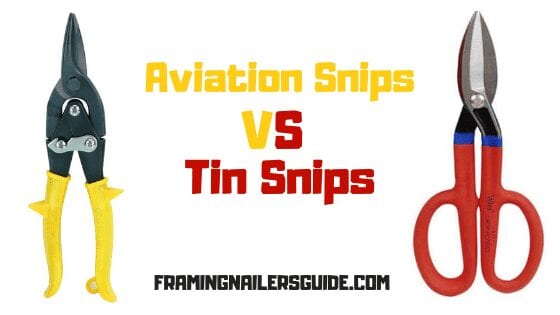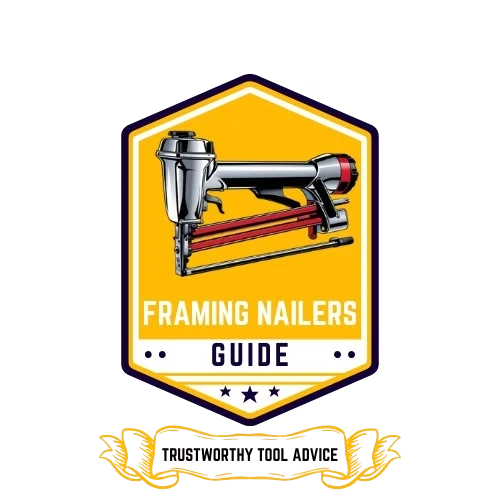Table of Contents
Last Updated on December 21, 2024 by John Patterson

Sheet metals are incredibly versatile. You can use these in a lot of ways. No matter what metal sheet you use, an excellent old cutting is always necessary.
However, you can cut sheet metal in a lot of ways. From the old fashion scissors to cutting-edge laser technology, many ways are there for this job.
Here’s the thing-
Laser cuts are extraordinarily accurate and work best but are highly expensive. On the other hand, snip tools are super-efficient.
But aviation snips and tin snips are two types of snips. But there are some slight differences between these. And for that reason, the ‘difference between tin snips and aviation snips’ has always been a popular topic among sheet metal workers.
We’re here to cut deeper into the topic and to layout facts. Because using the wrong tool for the wrong job might end up in a disaster. So, let’s jump right into the details-
Aviation Snips vs Tin Snips: Comparison
Let’s know the detail of tin snips and aviation snips.
What is an Aviation Snip?
Aviation snips are just another version of scissors. These are other handheld tools using lever technology to cut through metal sheets. However, you can also cut softer materials like rubber or plastic with aviation snips.
Aviation snips were first introduced for cutting metal sheets used in aircraft construction. And from there, it got its name as aviation snips.
How to use Aviation Snips?
First, look at the snip specifications. See if your cutting material is suitable for the snip.
Next, look at the color of the snips. There are three colored aviation snips. Red, green, and yellow. Each of these colors has different uses.
If you want a curved cut, red or green snips are for you. However, if you want a straight cut, then the yellow one is suitable. Moreover, see which snip cuts are on which side. The right-cut snip will generate waste on the right-hand side. And it’ll be vice versa for the left snip.
After figuring out the blades mark up your sheet. Start cutting the sheet according to the marks. Lastly, smooth up the newly cut area.
What is a Tin Snip?
A tin snip is another type of tool used for cutting metal sheets. This tool also uses lever technology for cutting sheets.
But this snip is more like a long-necked scissor with shorter blades. This tool is designed for cutting thin metals. For example, you can cut sheets of 22-gauge cold-rolled steel or 26-gauge stainless steel (Max) with tin snips.
How to Use Tin Snips?
If you can cut with scissors, you’ll be able to cut with tin snips.
It’s because the method is the same. But there are some differences too.
So, let’s look at how to use tin snips-
Just like before, start by marking your working area. Plan out how to cut and where to cut.
Once you’re done, place your tin snip onto the sheet. Next, start cutting. And here is the main detail.
While cutting, don’t close the blades fully. This is necessary if you want to have a smooth cut.
After finishing the cut, you can smoothen the edges for better safety.
Pros and Cons of Using Tin snips and Aviation Snips
Now that you’ve known the primary details about aviation and tin snips, it’s time to get real. Here we will focus on the pros and cons related to practical uses.
More specifically, you’ll face the advantages and disadvantages while working with these tools. Now, let’s get going-
Pros and Cons of Aviation Snips
Aviation snips are meant to do trim work rather than making significant and rough cuts. To be more specific, this tool is perfect for creating relief notches and cutting off thin slivers.
-
- Aviation snips have spring-loaded handles. This gives the user a mechanical advantage while cutting. As a result, your hand gets half the wear and tear.
- These snips are highly versatile. Apart from cutting, you can do ductwork and gutters. The three-way blades give you cutting freedom on a whole new level.
- Aviation snip blades have a notch-like structure. You’ll get a firmer grip on the workpiece thanks to blade teeth.
- Thanks to the metal latch on this tool’s side, you can safely secure the jaws.
- These snips are a bit expensive. Thanks to the specialized features, you’ll need to go deeper into your pocket.
- A certain level of skills is needed to use Aviation snips.
Pros and Cons of Tin Snips
Tin snips are best for cutting thin metal. To be more specific, this tool is your best buddy for low-budget metal sheet works.
-
- The first and foremost advantage of tin snips is the low-cost factor. As we have said earlier, these are perfect for your temporary DIY project.
- Tin snips require a lower level of skills for operating. Anyone who can use scissors can use tin snips.
- Because of the long handles, you’ll have lower chances of muscle fatigue and strain injuries.
- As the tin snips have fewer parts, it’s highly durable. So you won’t have frequent malfunctioning and troubleshooting.
- Because of the simple mechanism, tin snips are low on versatility. So, there are many works you cannot do with tin snips.
- It doesn’t have spring-loaded handles, so it takes more effort to cut.
In Conclusion
So the burning question is tin snips and aviation snips which are perfect for your projects. If you ask us, then we have no direct answer. We have laid out the facts. You can decide better based on those facts. Moreover, the answer also depends on your situation.
Good luck. Happy cutting.



